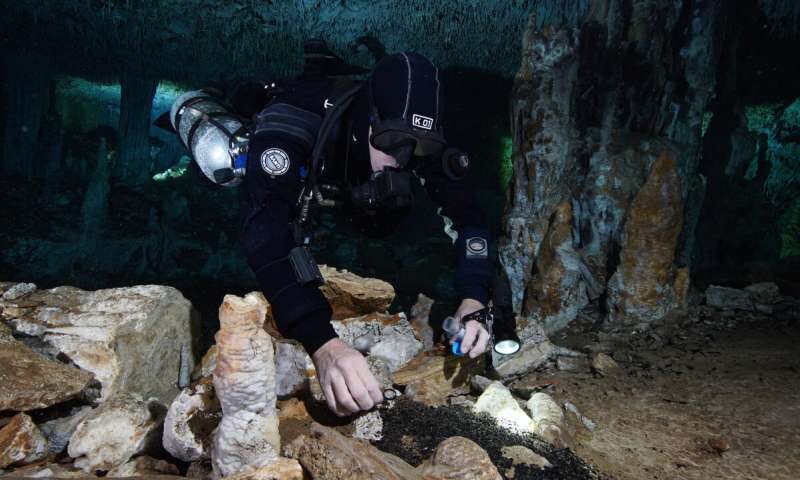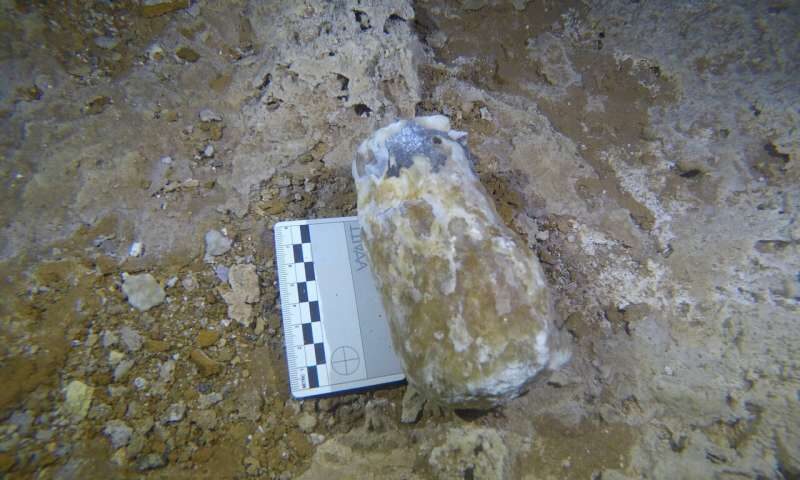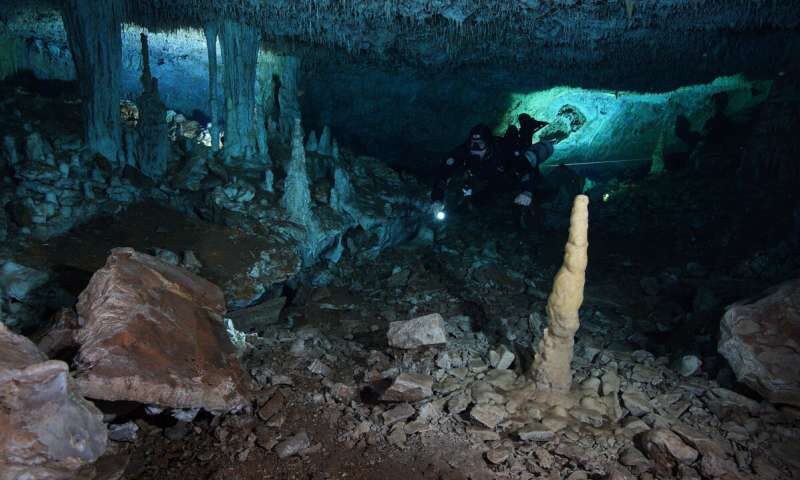
Thousands of years ago, the first inhabitants of the Americas journeyed deep into caves in present-day Mexico to mine red ochre, a highly valued, natural clay earth pigment used as paint.
Now, according to a new study, scientists and divers have discovered the first evidence of this mining operation deep within underwater caves in Mexico's Yucatan Peninsula.
"What is remarkable is not only the preservation of the mining activity, but also the age and duration of it," said study lead author Brandi MacDonald of the University of Missouri. "We rarely, if ever, get to observe such clear evidence of ochre pigment mining of Paleoindian age in North America, so to get to explore and interpret this is an incredible opportunity for us.
"Our study reinforces the notion that ochre has long been an important material throughout human history."
Comment: A 45,000 year old lion statuette found in Denisova Cave, Siberia, also covered with red ochre may be the world's oldest animal statuette.
While MacDonald and her colleagues are uncertain exactly how this ochre was used, evidence from other parts of North America suggest it may have been used as an antiseptic, sunscreen or vermin repellent or for ritual and symbolic purposes such as funerals or art decoration.

This evidence of ancient cave exploration and mining spans a period of many generations over about 2,000 years and dates from 12,000 to 10,000 years ago, according to the study. That was 8,000 years before the establishment of the Maya culture for which the region is well known.
The caves have all filled with water in the thousands of years since the original mining was done because of rising sea levels that led to floods.
Cave divers made the discovery hundreds of feet into an underwater cave, at some points squeezing themselves through tiny crevices to reach the find. During nearly 100 dives totaling more than 600 hours, divers found extensive evidence of the prehistoric ochre mining operations.
The finds included remarkably preserved ochre extraction beds and pits, digging tools, shattered debris that has been piled by human effort, navigational markers and fire pits.

In addition to the international team of scientists, the divers were also from Mexico's National Institute of Anthropology and History and from the Quintana Roo Aquifer System Research Center (CINDAQ).
Experts say the find is only the beginning of discoveries possible in the caves of the Yucatan.
"It is not what we have found so far, but what we have yet to discover that gets us out of bed every morning," said Sam Meacham, cave exploration researcher and founder of CINDAQ. "We have no doubt that there is so much more out there just waiting to be found and understood."
The study was published Friday in the peer-reviewed journal Science Advances.
More information: B.L. MacDonald el al., "Paleoindian ochre mines in the submerged caves of the Yucatán Peninsula, Quintana Roo, Mexico," Science Advances (2020). advances.sciencemag.org/lookup ... .1126/sciadv.aba1219 Journal information: Science Advances



Comment: See also:
- Ancient skulls from Mexico surprisingly diverse, challenges assumptions about settlement of the Americas
- Aguada Fenix: Major discovery of oldest and largest ceremonial structure in Mexico
- America Before by Graham Hancock - Book review
- Ancient Siberia was home to previously unknown humans - Theory of Native American ancestors rewritten
Also check out SOTT radio's: